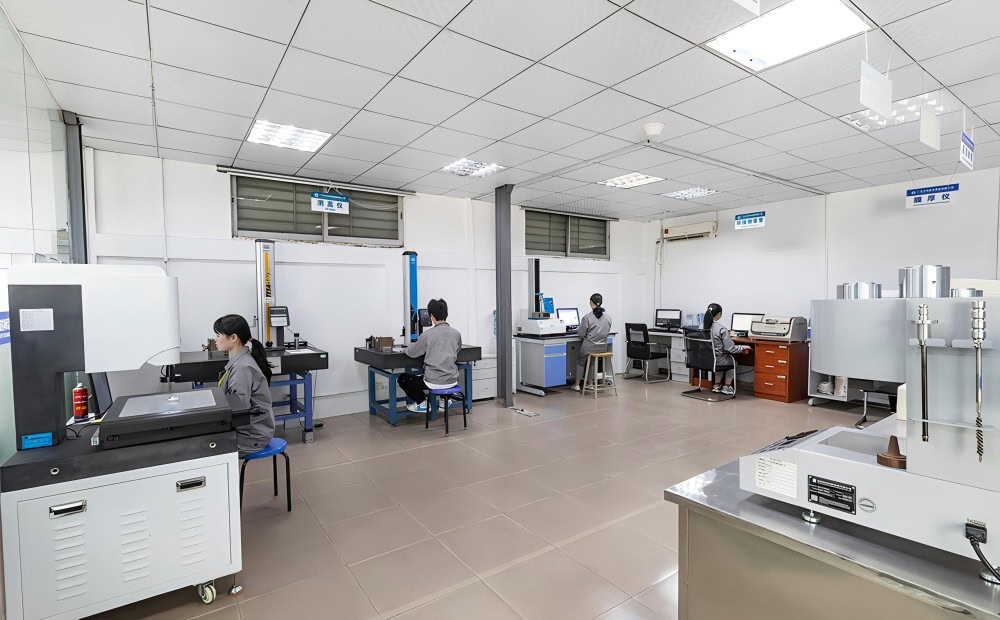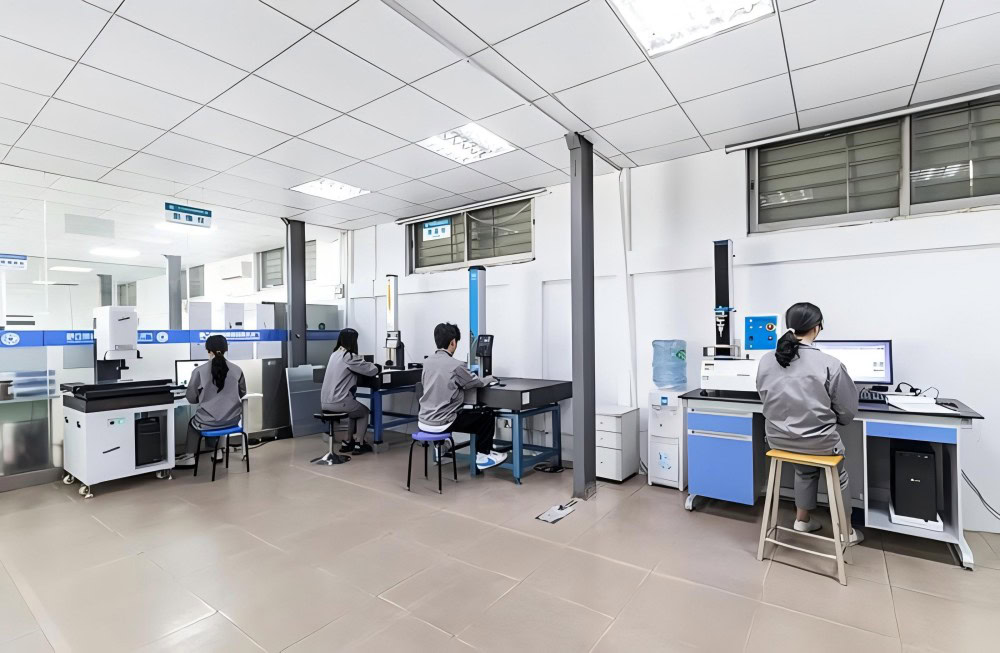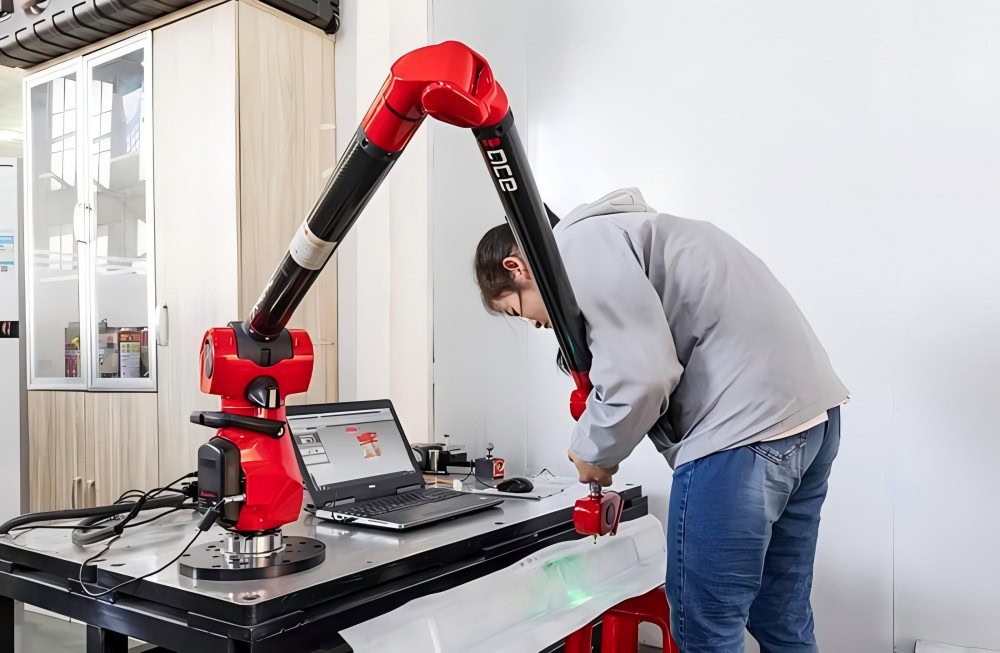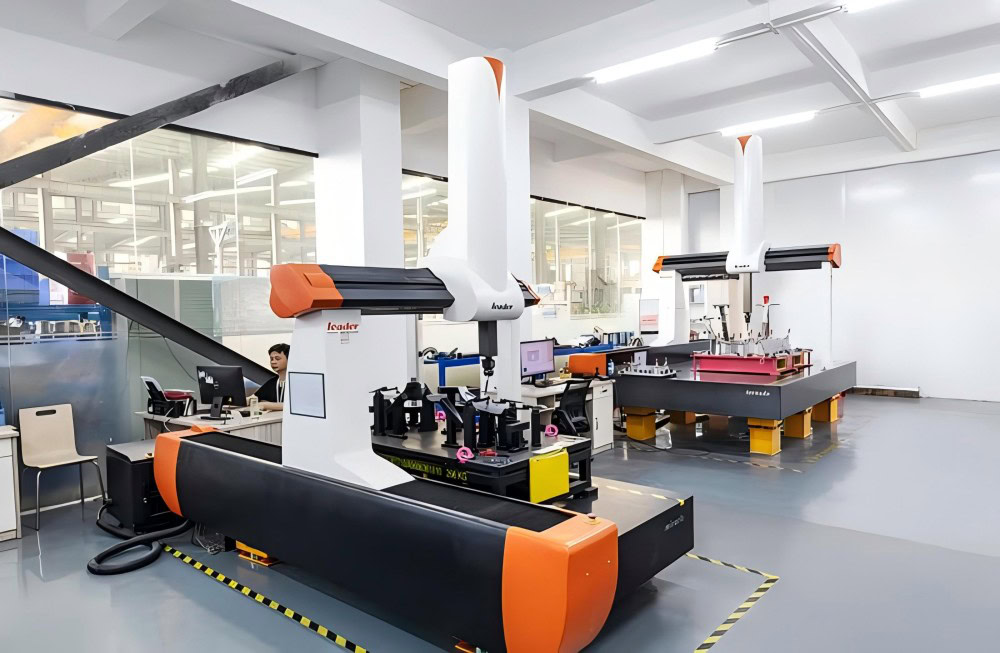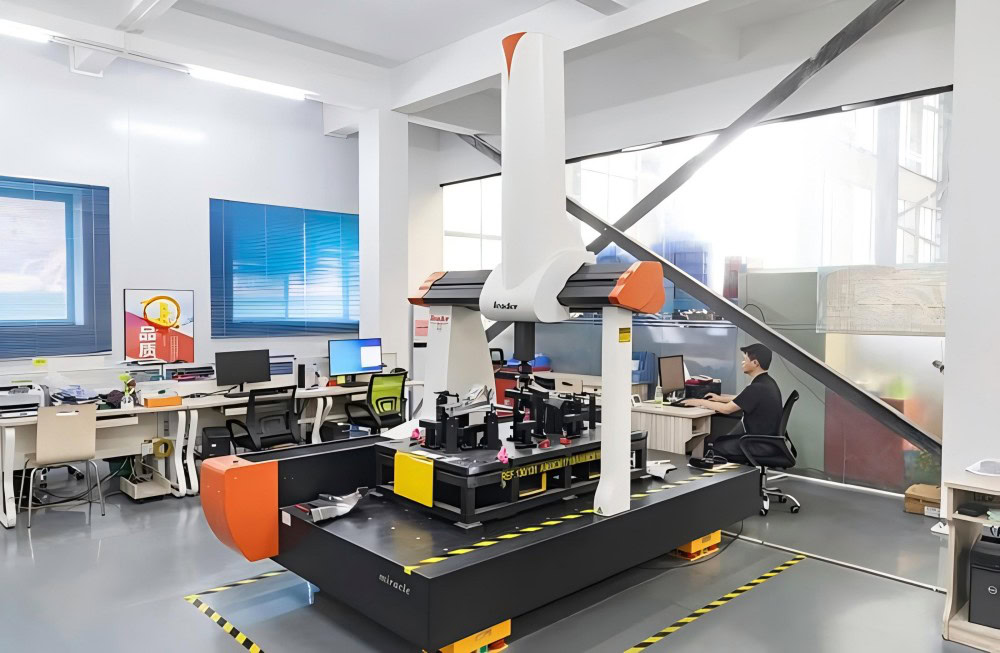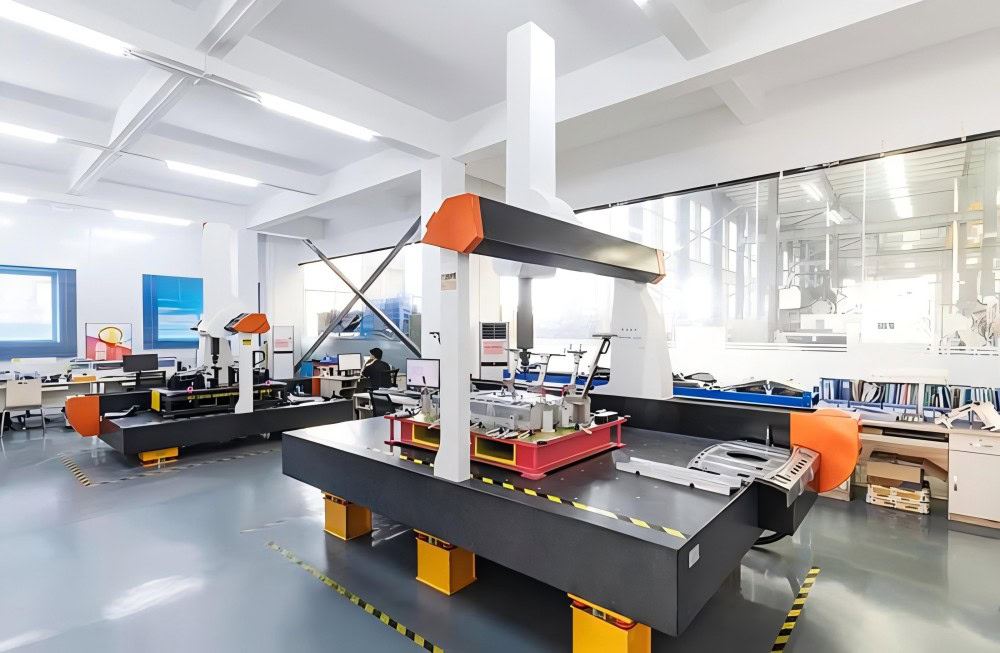Titanium Sheet Metal Stamping Services
Wstitanium is a leading sheet metal stamping titanium parts manufacturer. Strong precision stamping capabilities, including: Blanking, Bending, Punching, Coining, Drawing, Embossing, Piercing, Curling, etc.
- ISO9001 & ISO13485
- Design and DFM Support
- Minimum Order Quantity: 1
- Stamping Size: 1 mm to 2.5 meters
- Thickness range: Min 0.2 mm, Max 20 mm
Wstitanium Workshop
Our Powerful Facilities

Sheet Metal Stamping for Custom Titanium Parts
Sheet metal stamping is a fast, reliable and efficient process of using tools and dies to press and punch titanium sheets into the required final complex shape parts. Wstitanium is committed to investing in the latest technology and machines to select the most appropriate short-term titanium stamping options based on part geometry, quantity, project budget and ongoing needs. The result is titanium parts that maintain tight tolerances and maintain accurate replication throughout the manufacturing process while reducing setup time and costs.
What We Can Do In Sheet Metal Stamping?
Wstitanium is a problem solver, always improving our titanium sheet metal stamping service proficiency and developing solutions to stay ahead of your detailed needs. With superior precision stamping engineering capabilities, we manufacture single stamping, compound or complex progressive dies to your exact specifications. Our titanium sheet metal stamping services can modify existing dies to meet new requirements. Quantities range from 1 to 1,000,000 or more. Wstitanium offers custom titanium part stamping processing in four processes: progressive die stamping, deep draw metal stamping, transfer die stamping and multi-slide metal stamping.
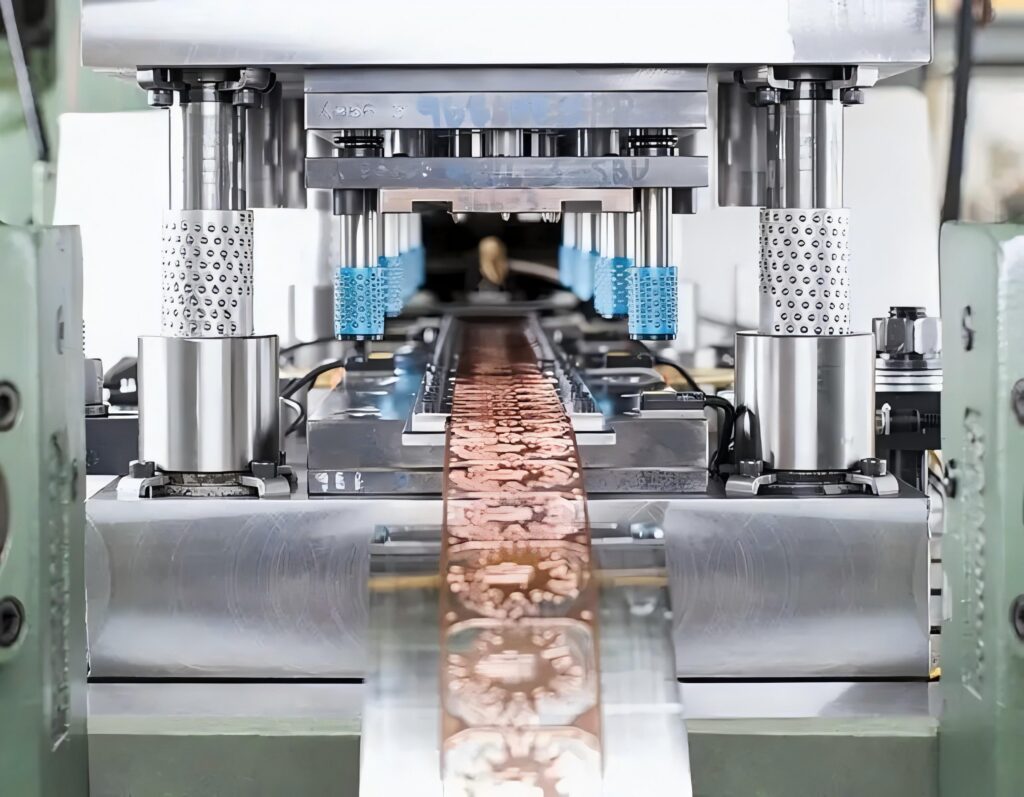
Progressive Die Stamping
Progressive die stamping excels in high-volume manufacturing, complex designs, precise tolerances and fast turnarounds, resulting in increased efficiency and cost-effectiveness.
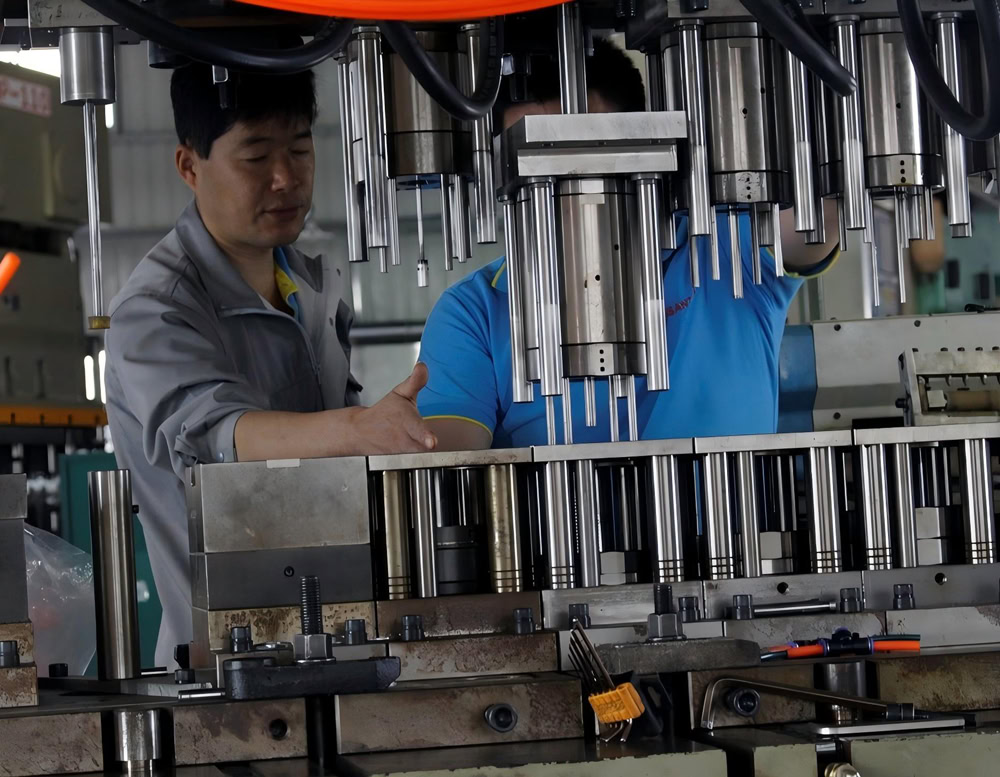
Deep Drawn Metal Stamping
Designed to produce complex shaped parts with a high depth-to-diameter ratio, deep-draw metal stamping is ideal for creating seamless, lightweight components.
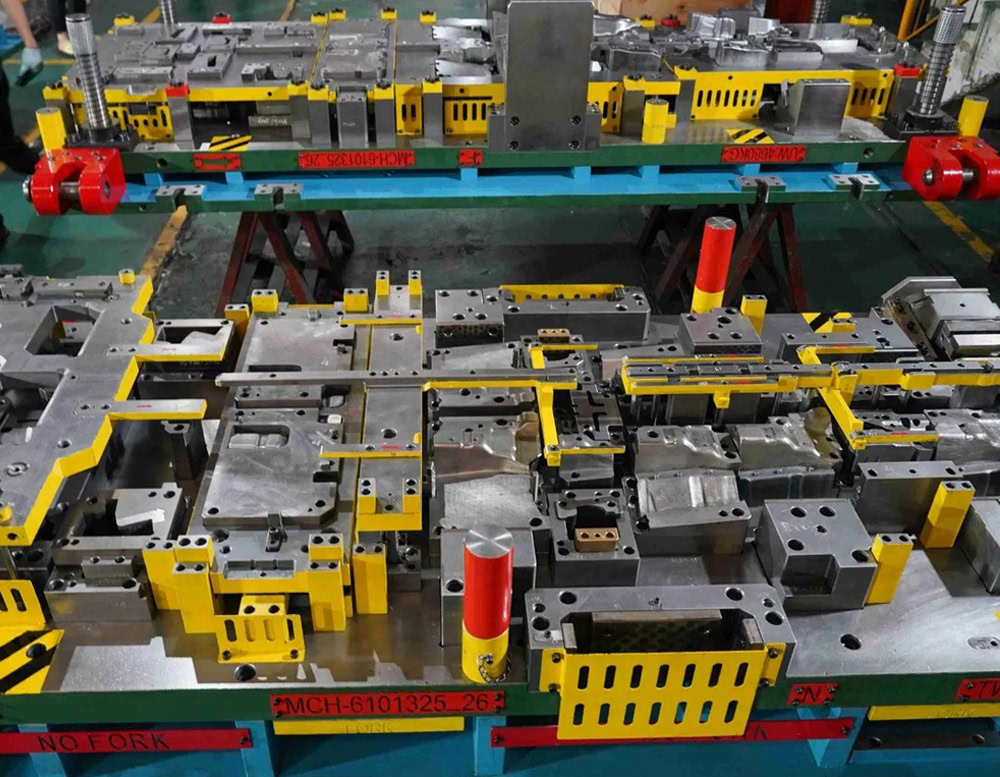
Transfer Die Stamping
Transfer die stamping excels in manufacturing large, complex parts, ensuring uniformity, minimizing material waste, and facilitating automated production processes.
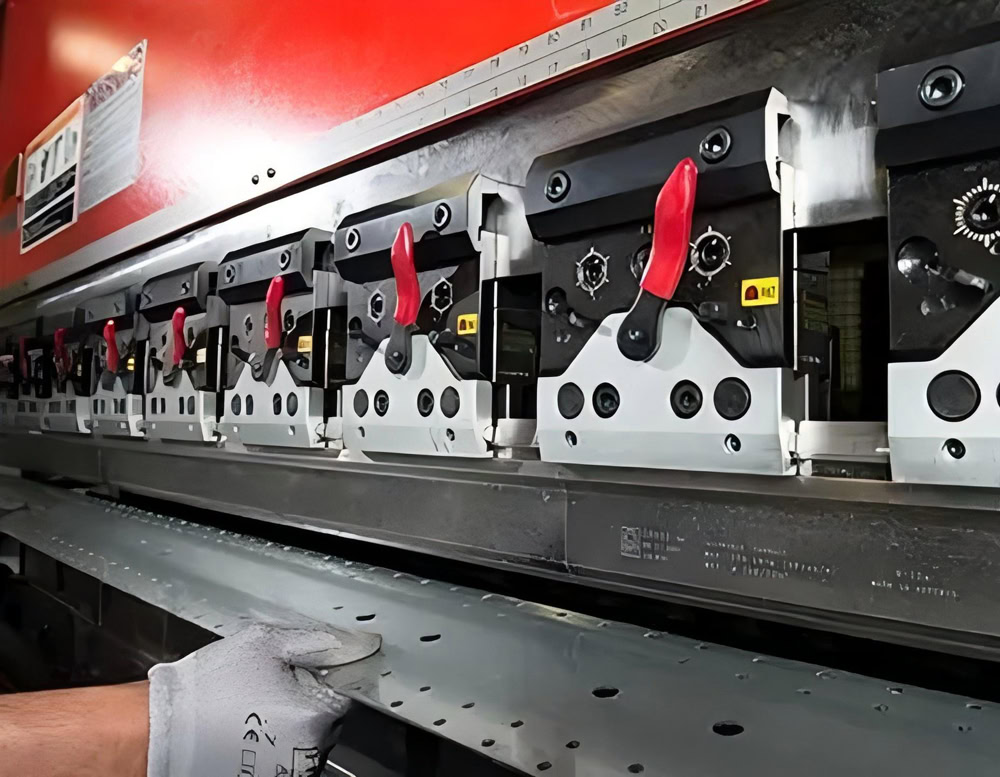
Multi-Slide Metal Stamping
Multi-slide metal stamping can manufacture small and medium-sized parts with complex geometries with high precision, efficiency and cost-effectiveness.
Wstitanium Sheet Metal Factory Showing
Wstitanium’s sheet metal factory covers an area of 4,000 square meters and invests in state-of-the-art equipment, including a 1,000-ton punch press, an automatic turret punch press with a bed size of up to 36X48 inches, a computerized bending machine, a robotic coil feeding, and compound and progressive dies.
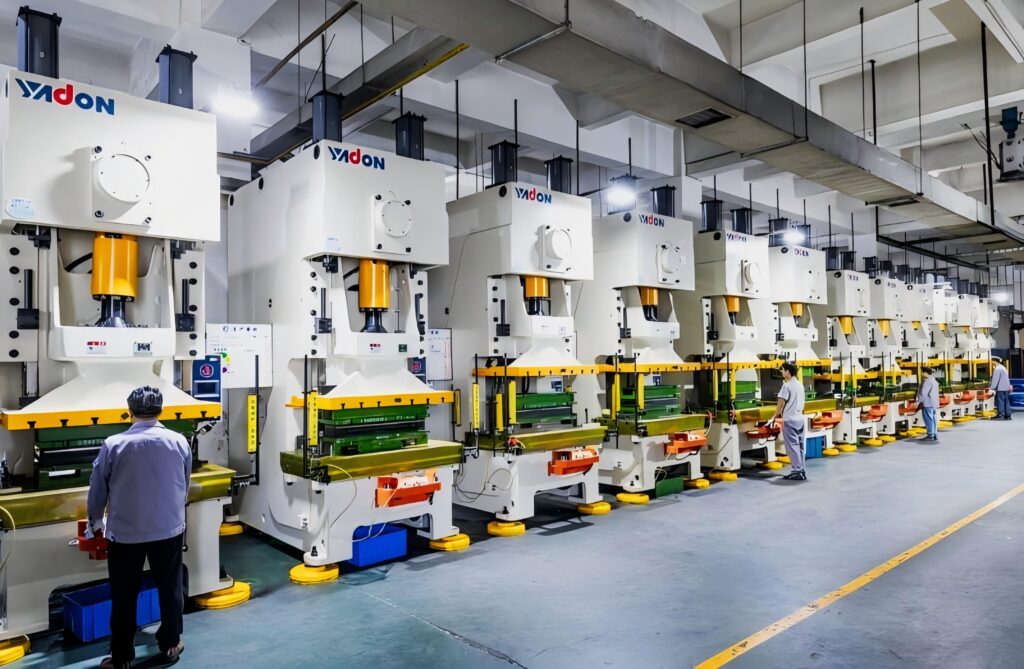
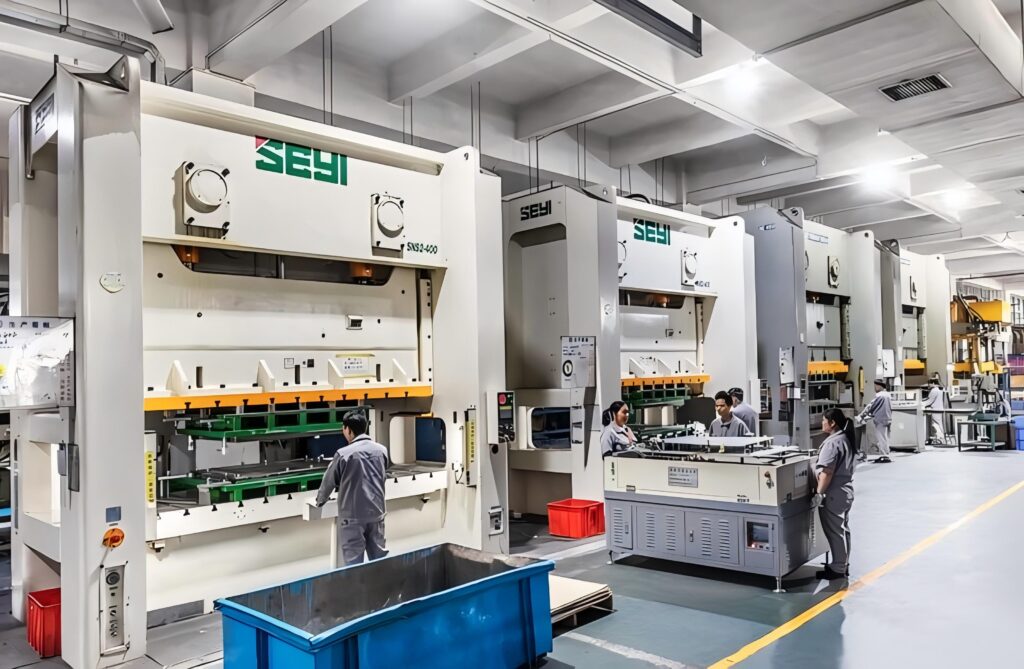
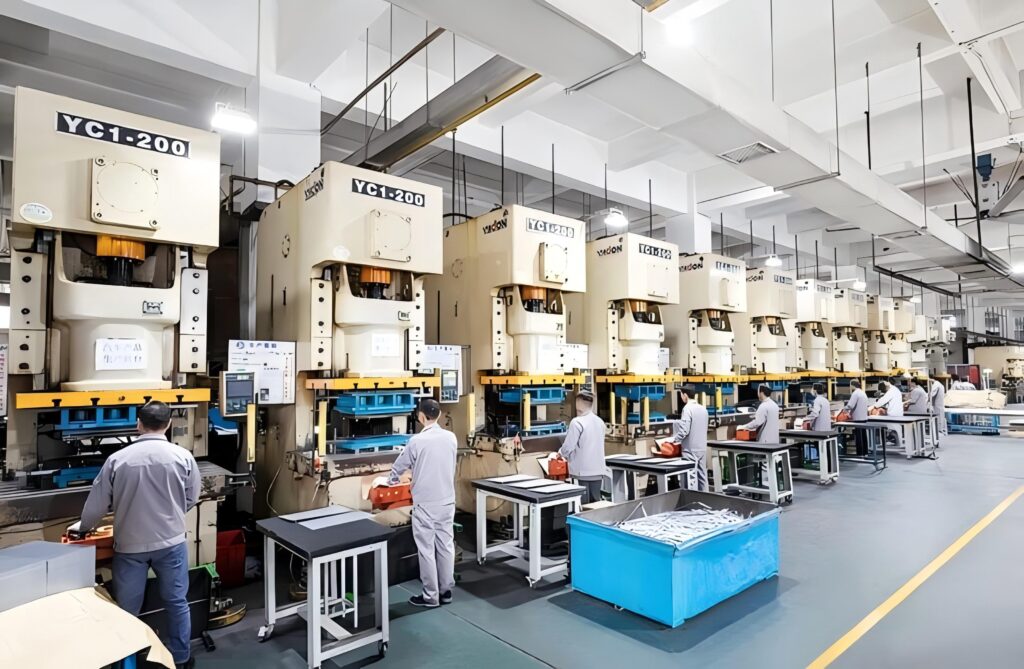
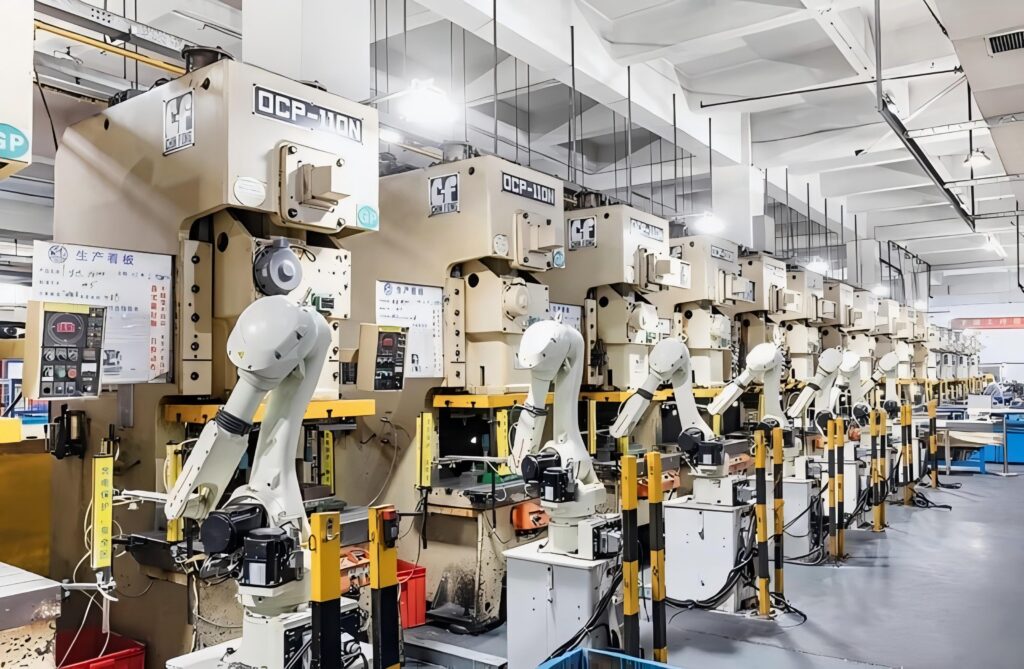
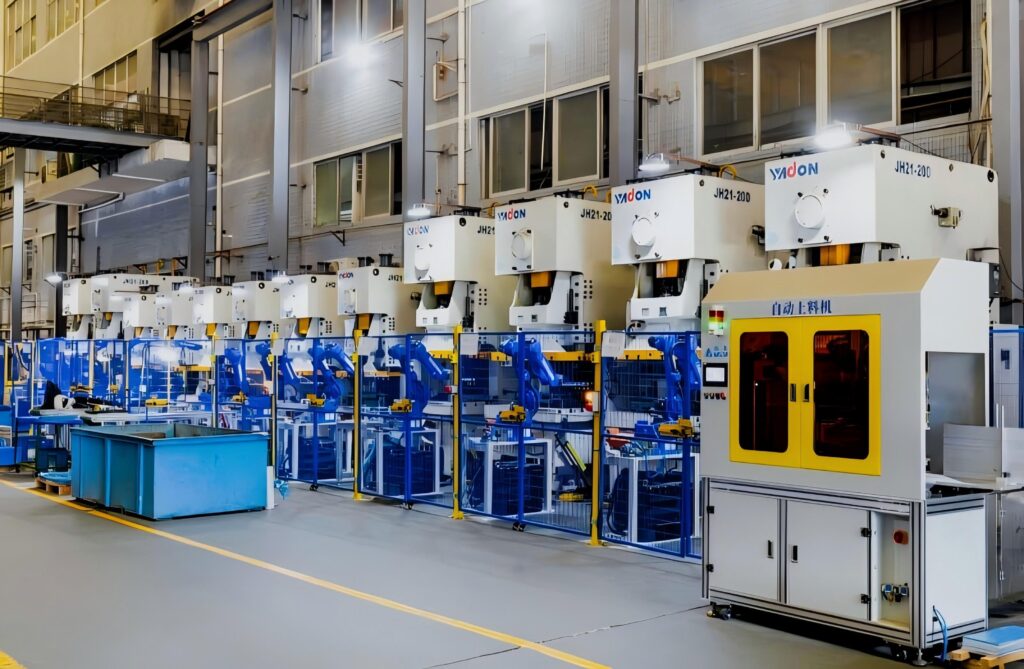
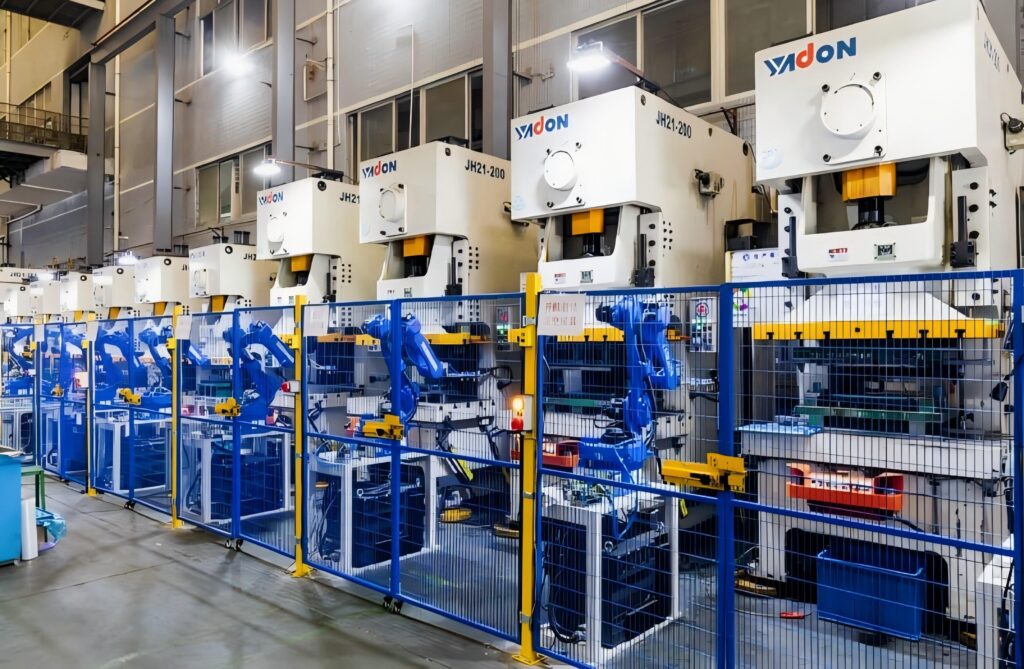
Wstitanium Sheet Metal Stamping Capabilities
From prototyping to high volume manufacturing production, Wstitanium handles any project size with precision. Our custom stamping services can create custom titanium parts for any industry, including automotive, aerospace, and medical. Wstitanium’s standard sheet metal stampings can create small, medium, and large parts. Wstitanium’s supplier network has a maximum press length of 10 feet and a maximum press width of 18 feet. We can easily stamp titanium sheet from 0.025 – 0.5 inches thick, depending on the forming technique and titanium grade used.
| Capability | Details |
| Material | Titanium Grade 1, Grade 2, Grade 5, Grade 23 |
| Thickness | 0.005″ to 0.250″ |
| Maximum Blank Width | 12″ |
| Maximum Blank Length | 24″ |
| Maximum Tonnage | 200 tons |
| Tolerance | +/- 0.005″ |
| Secondary Operations | Deburring, tapping, drilling, welding, and assembly |
| Surface Finishing | Powder coating, plating, painting, and polishing |
| Volume | Prototype to high volume production runs |
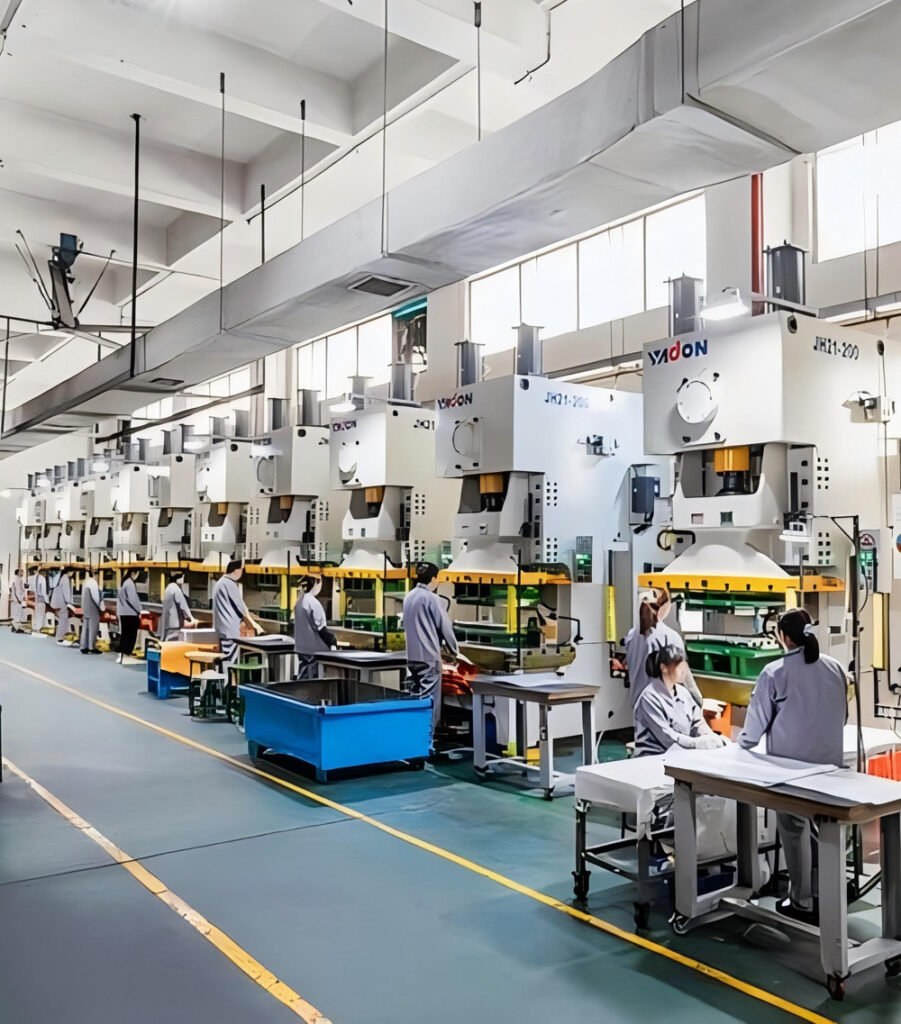
Titanium Grades for Sheet Metal Stamping
Not all titanium alloys are created equal. For titanium sheet metal stamping, specific grades are selected based on their mechanical properties and machinability. Here is a breakdown of the most commonly used titanium types in sheet metal stamping applications:
Grade 1 Titanium
Grade 1 titanium is the softest, most ductile grade, ideal for applications that require maximum formability and corrosion resistance. Due to its excellent corrosion resistance, it is often used in situations that require welding and in the chemical and pharmaceutical industries.
Grade 2 Titanium
Grade 2 titanium is the workhorse of commercially pure titanium grades. It offers better strength, ductility, and corrosion resistance than grade 1 titanium and is used in a wide range of aerospace and industrial projects. It is the most commonly used grade for general purpose titanium sheet metal stamping.
Grade 5 Titanium (Ti-6Al-4V)
Grade 5 titanium is the most popular titanium alloy and is often referred to simply as Ti-6Al-4V. It has significantly higher strength and heat resistance than pure titanium grades. Grade 5 titanium’s durability under pressure and high temperature environments makes it suitable for high-strength applications in the aerospace, automotive, and military sectors.
Grade 23 Titanium (Ti-6Al-4V ELI)
This grade is a variation of Grade 5 and is known as “Extra Low Interstitial”, with enhanced ductility and fracture toughness at cryogenic temperatures. It is particularly popular in the medical implant industry, where the combination of high strength, light weight and overall biocompatibility is critical.
Different Operations in Precision Stamping Titanium
Depending on the grade of titanium alloy, the intended shape and size, titanium may go through different stages of cutting and forming, some of these operations are:
Punching: Creating a hole in a flat material such as sheet metal by shearing and removing the waste material from the titanium sheet. This process is used to quickly make holes of various shapes.
Blanking: During the blanking cutting process, the workpiece is removed from the original titanium sheet. The remaining material is set aside.
Bending: The bending process folds the titanium alloy along a straight axis to give it different shapes. This process is used to create finished titanium stamping products.
Imprinting: Applying very high pressure to the titanium sheet to get a finished part with sharp edges.
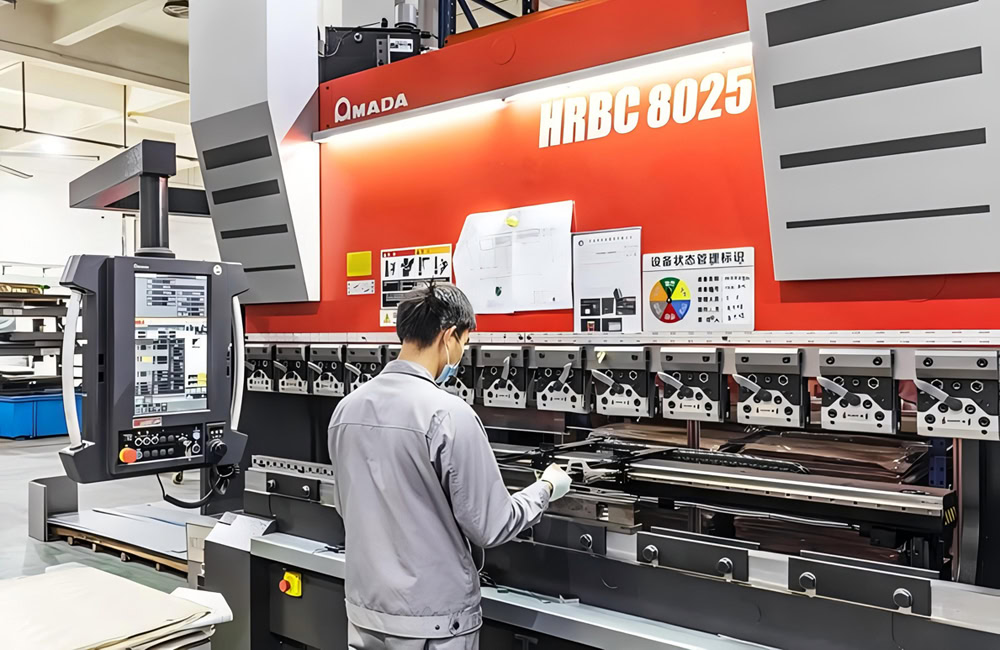
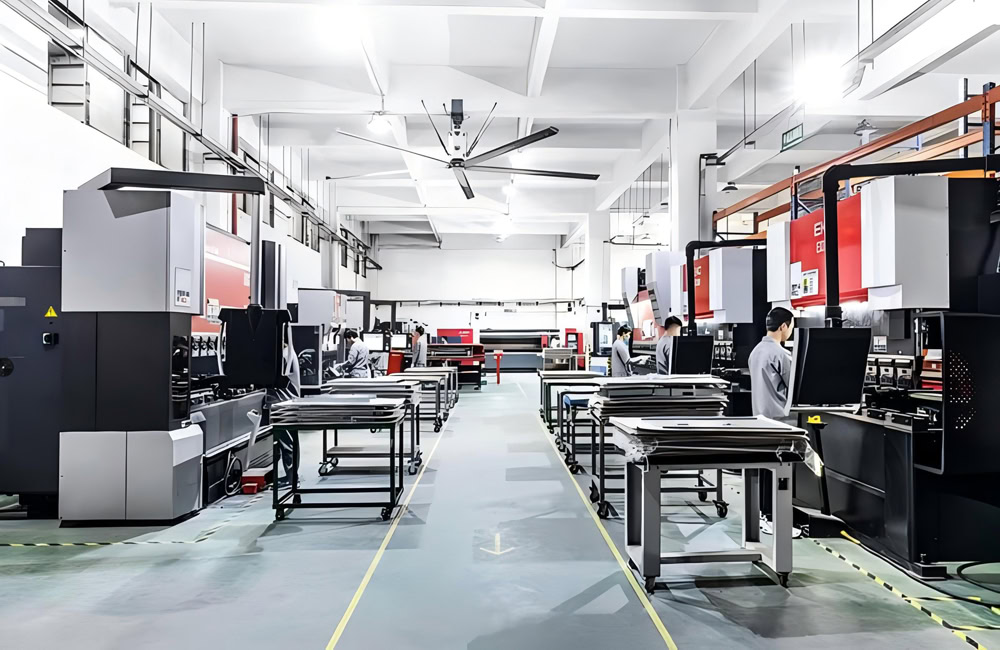
Drawing: Drawing uses tensile forces to stretch titanium into a thinner shape to get the desired thickness and shape.
Embossed: Embossing is used to create raised or depressed designs and images on the surface of the titanium sheet.
Flanging: Flanging is like bending where titanium is folded along an axis. However, instead of a straight line, it bends the titanium workpiece 90 degrees.
Shearing: Shearing is used to cut titanium sheets along a straight line. This machining method is best suited for producing large, rectangular or square titanium sheet blanks.
Trimming: This is a finishing operation that removes excess material from the titanium blank on a finished or nearly finished part. The remaining titanium can be sold or recycled.
Wstitanium Sheet Metal Assembly
Wstitanium fully understands the importance of sheet metal assembly. If the assembly is wrong, it will greatly affect the quality and service life of titanium sheet metal parts. Therefore, Wstitanium invests in multiple assembly technologies to quickly assemble sheet metal parts in order to solve this problem. In addition, the size, performance standards and cost factors of each assembled component need to be ensured.
Method #1: Mechanical Assembly
Mechanical assembly is the most common method for handling sheet metal parts. It is the best option for assembling fasteners with automatic screwdrivers. Of course, it is also used to disassemble sheet metal parts or fasteners (nuts or screws). In addition, it also tests the proficiency of the assembler, and the screws or nuts must not have any cross-threading or damage. Therefore, a comprehensive inspection must be carried out after installation to ensure that the screws or nuts are well installed.
- Lift Table
- Cabinet
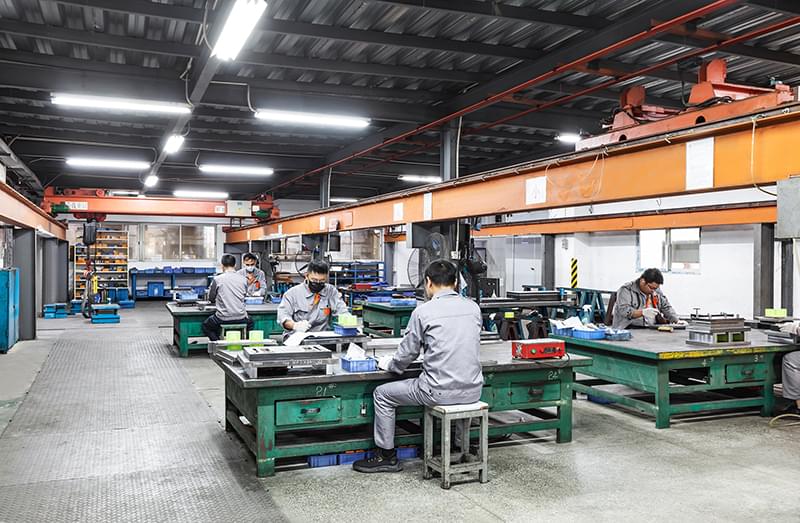
Method #2: Manual Soldering Assembly
Wstitanium uses traditional welding processes, i.e. TIG, MIG, etc. Usually, a visual inspection is first performed and special solutions are used to check for quality problems in welding, including incomplete welding or welding leakage. In addition, we can perform tensile testing, X-ray inspection, ultrasonic testing and other inspections according to your requirements.
- Sheet metal positioning
- Sheet metal reinforcement areas
- Sheet metal part corners or edges
- Joints are applied to sheet metal cabinets
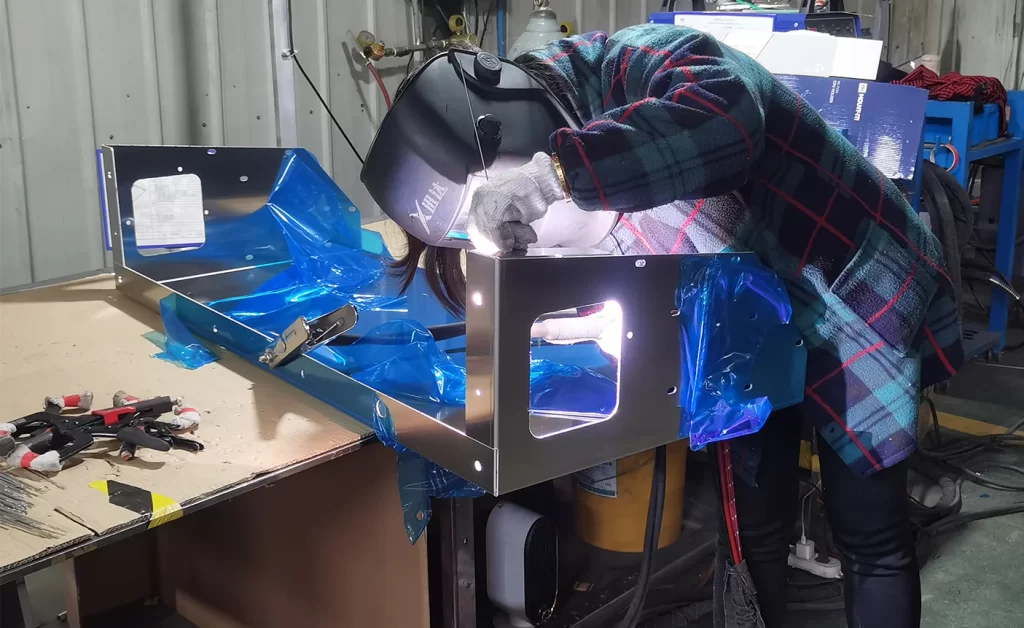
Method #3: Robotic Welding Assembly
Robotic welding is the most effective welding technology. It provides consistently high-quality joints and higher efficiency. In addition, it is low-cost, requires no human intervention, and has high quality consistency. Wstitanium has invested in about 20 robotic welding machines and 3 laser welding equipment. These help us meet the needs of mass production of sheet metal parts. In addition, compared with manual welding, robotic welding guarantees high precision and efficiency and is used in large projects. It is a good option for large quantities and complex sheet metal parts. This helps to improve the efficiency of sheet metal assembly production.
- Cabinet sheet metal seams
- Sheet metal part corners or edges
- Sheet metal reinforcement locations
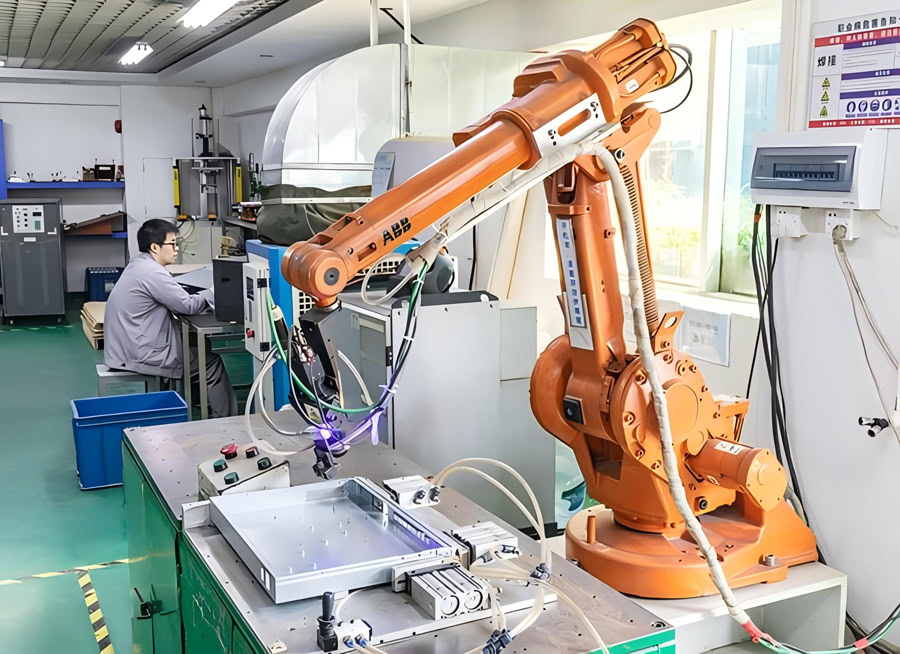
Method #4: Riveted Assembly
Riveting is widely used in many industries, using rivets instead of welding, and is mostly used in aircraft fuselages, ship hulls, and assemblies. Riveting also helps to increase the strength and durability of joints. In addition, it also helps to improve corrosion resistance and function at low and high temperatures. Riveting mainly includes pull riveting, expansion riveting, pressure riveting, and spin riveting. The choice of riveting type is based on the assembly requirements of different sheet metal parts.
- Sheet metal cabinet brackets
- Protective covers and baffles
- Sheet metal parts connection
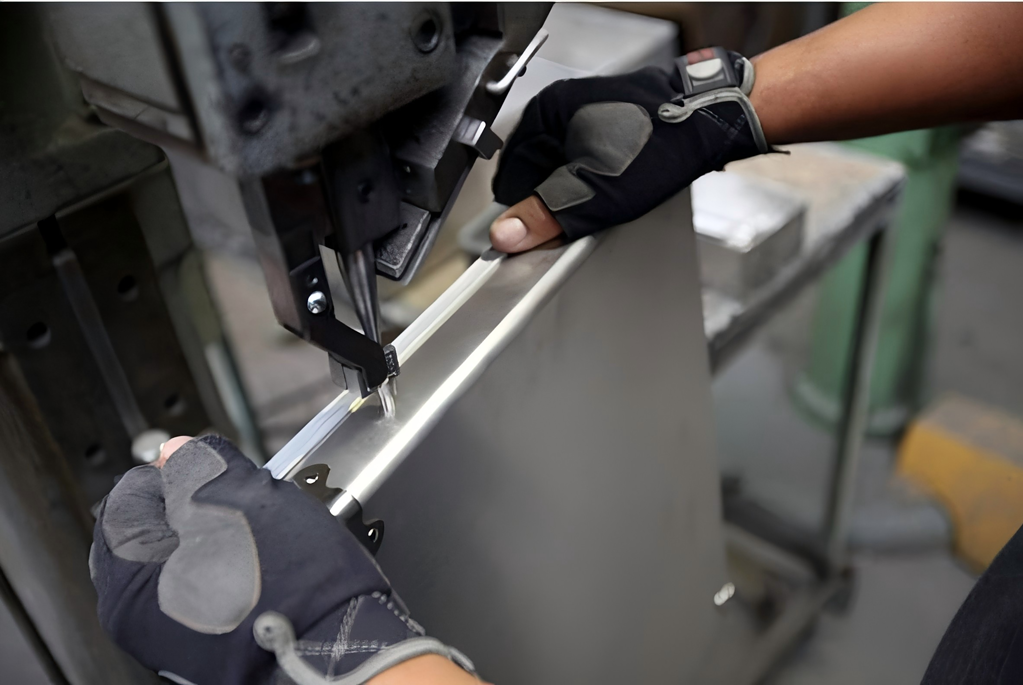
Quality Inspection
Quality can be defined as the degree to which a product conforms to its requirements. As stated in ISO 9000:2015 Part 3. The degree to which a set of inherent properties of an object meet the requirements. Wstitanium understands the importance of sheet metal manufacturing quality control in the production of sheet metal parts. Achieving consistency in components not only eliminates defects, but also helps minimize costs while maintaining high security and reliability of sheet metal standards. Wstitanium’s quality inspection items for sheet metal manufacturing include: straightness, flatness, concentricity, perpendicularity, contour, runout, etc. Standard dimensions and tolerances are established for each feature to improve accuracy.
